Film
Sam Hunter and the Making of “Bear Los Angeles”: A Cinematic Journey
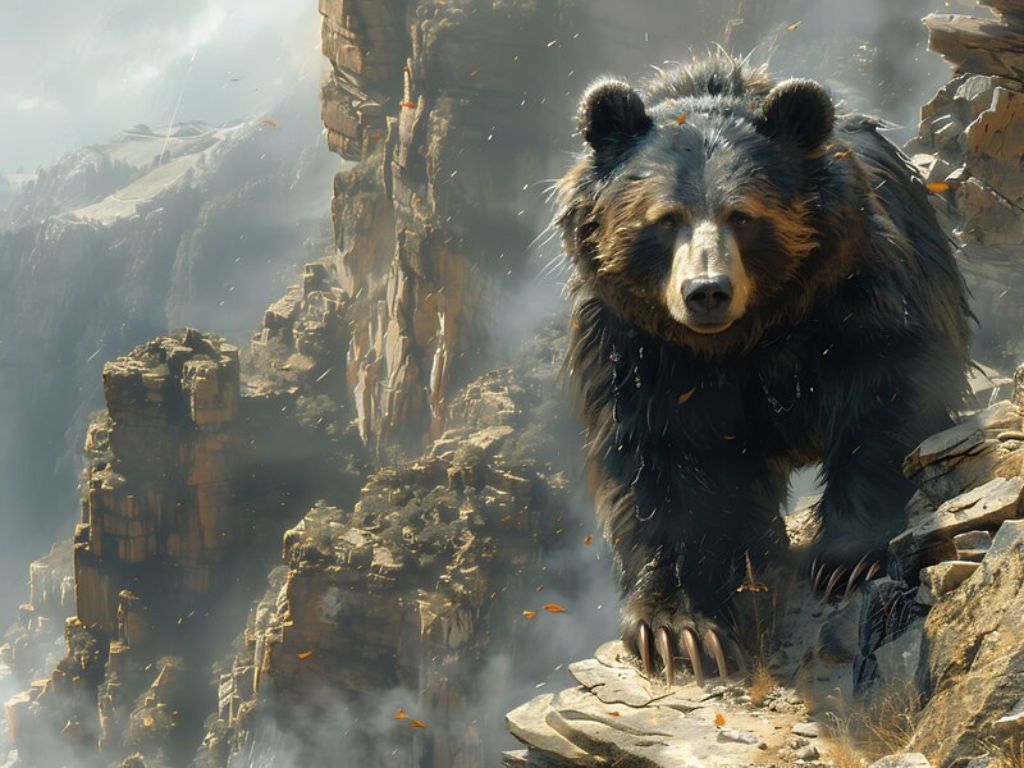
Sam Hunter and the Making of “Bear Los Angeles”, In the ever-evolving landscape of independent filmmaking, few projects have captured the raw, gritty essence of urban life like “Bear Los Angeles.” Directed by the visionary filmmaker Sam Hunter, this film delves deep into the heart of Los Angeles, exploring themes of identity, survival, and the complexities of human relationships. With its compelling narrative and unique visual style, “Bear Los Angeles” stands as a testament to Hunter’s skill as a storyteller and his ability to bring the city of Los Angeles to life on screen. This article explores the making of “Bear Los Angeles,” the inspiration behind the film, and its impact on the indie film scene.
The Genesis of “Bear Los Angeles”
“Bear Los Angeles” began as a passion project for Sam Hunter, a filmmaker known for his ability to tell deeply personal stories through the lens of urban realism. Hunter, who has spent much of his life in Los Angeles, drew inspiration from the city’s diverse neighborhoods, its vibrant culture, and the often-overlooked struggles of its inhabitants. He envisioned a film that would capture the spirit of Los Angeles in a way that few movies have managed to do.
Sam Hunter and the Making of “Bear Los Angeles” Hunter’s journey to create “Bear Los Angeles” started with a simple question: What does it mean to survive in a city as sprawling and unforgiving as Los Angeles? This question became the foundation of the film’s narrative, which follows the lives of several characters as they navigate the challenges of living in one of the most dynamic and challenging cities in the world. Hunter wanted to explore not only the physical survival in the city but also the emotional and psychological battles that come with it.
Crafting the Narrative: A Story of Survival and Identity
At its core, “Bear Los Angeles” is a story about survival—both literal and metaphorical. The film weaves together the lives of its characters, each facing their own unique struggles, yet all connected by their need to find a place in the chaotic environment of Los Angeles. The title “Bear Los Angeles” is symbolic, representing both the city’s iconic grizzly bear symbol and the idea of “bearing” the weight of existence in such a demanding place.
The protagonist, a man in his mid-30s named Jake, represents the quintessential Los Angeles resident—a person who has come to the city seeking something, whether it’s fame, fortune, or simply a new beginning. However, like many who come to Los Angeles, Jake quickly finds that the city is not what he expected. Through Jake’s journey, Hunter explores themes of disillusionment, resilience, and the search for identity.
Supporting characters in the film add depth to the narrative, each bringing their own perspectives on life in Los Angeles. There’s Maria, a young immigrant working multiple jobs to support her family, who faces the daily challenge of balancing her dreams with her responsibilities. Then there’s David, a struggling artist who grapples with the pressures of creating meaningful work in a city that often prioritizes commercial success over artistic integrity. Each character’s story is interwoven with Jake’s, creating a rich tapestry that reflects the diverse experiences of life in Los Angeles.
The Visual Style: Capturing the Essence of Los Angeles
One of the most striking aspects of “Bear Los Angeles” is its visual style, which plays a crucial role in bringing the story to life. Sam Hunter worked closely with his cinematographer to develop a look that would not only showcase the beauty of Los Angeles but also its darker, grittier side. The film features a mix of wide, sweeping shots of the city’s skyline and intimate close-ups of the characters, creating a contrast that mirrors the duality of life in Los Angeles.
Hunter chose to shoot much of the film on location in various neighborhoods across Los Angeles, from the bustling streets of downtown to the quiet, sun-soaked suburbs. This choice adds an authentic feel to the film, grounding the story in real places that viewers can recognize and relate to. The city itself becomes a character in the film, its vastness and diversity reflected in the experiences of the characters.
Lighting and color play a significant role in “Bear Los Angeles,” with Hunter using them to convey the emotional tone of different scenes. The film employs a warm, golden palette to depict the city during the day, highlighting the sense of opportunity and hope that Los Angeles often represents. In contrast, the nighttime scenes are shot with cooler, more muted tones, emphasizing the loneliness and danger that can lurk in the city’s shadows.
The Soundtrack: A Fusion of Cultures and Sounds
The soundtrack of “Bear Los Angeles” is another key element that contributes to the film’s atmosphere. Hunter wanted the music to reflect the diverse cultural influences that make up the fabric of Los Angeles. To achieve this, he collaborated with a range of local musicians, incorporating everything from Latin beats to hip-hop rhythms and traditional rock influences.
The soundtrack not only sets the mood for various scenes but also serves as a narrative tool, underscoring the characters’ emotional journeys. For example, a poignant scene between Jake and Maria is accompanied by a haunting melody that echoes their shared sense of longing and loss. Meanwhile, the energetic beats that play during scenes of the bustling city streets capture the fast-paced, ever-changing nature of Los Angeles life.
Challenges in Filmmaking: Bringing “Bear Los Angeles” to Life
Like many independent films, “Bear Los Angeles” faced its share of challenges during production. Funding proved to be one of the biggest hurdles, as Hunter sought to maintain creative control over the project without compromising his vision. To achieve this, he relied on a combination of crowdfunding, grants, and personal investment, which allowed him to bring his story to the screen without the constraints often imposed by larger studios.
Another challenge was the logistics of shooting on location in a city as large and busy as Los Angeles. Hunter and his team had to navigate permits, street closures, and the unpredictability of shooting in public spaces. Despite these obstacles, they managed to capture the authenticity and energy of the city, thanks in part to a dedicated crew and the support of the local community.
Reception and Impact: “Bear Los Angeles” in the Indie Film Scene
Since its release, “Bear Los Angeles” has garnered critical acclaim for its honest portrayal of life in Los Angeles and its unique visual style. The film has resonated with audiences, particularly those who have experienced the challenges of living in a big city, and it has sparked discussions about the realities of urban life and the pursuit of dreams in an often unforgiving environment.
“Bear Los Angeles” has also made waves in the indie film scene, earning accolades at various film festivals and attracting attention from distributors. Its success is a testament to Sam Hunter’s talent as a filmmaker and his ability to tell stories that are both deeply personal and universally relatable. The film’s impact extends beyond its narrative, serving as an inspiration for other independent filmmakers who strive to bring their own unique visions to life.
Conclusion: Sam Hunter’s Legacy with “Bear Los Angeles”
“Bear Los Angeles” stands as a powerful example of what independent cinema can achieve. Through his meticulous attention to detail, commitment to authenticity, and deep understanding of his subject matter, Sam Hunter has crafted a film that not only captures the essence of Los Angeles but also resonates with viewers on a profound level. As Hunter continues to make his mark on the film industry, “Bear Los Angeles” will undoubtedly be remembered as a defining work in his career, and a significant contribution to the world of independent film.
Film
The Ultimate Guide to Ridex Film: A Revolutionary Step in Photography
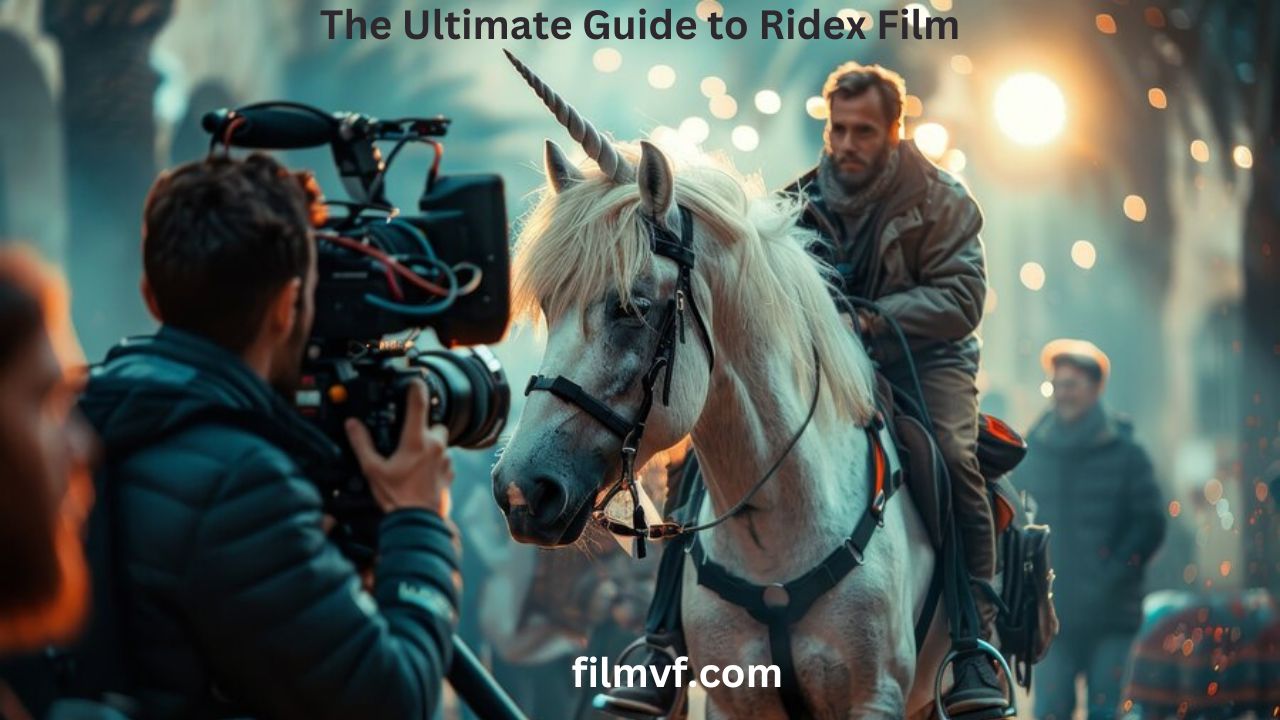
The Ultimate Guide to Ridex Film. Photography continues to evolve with innovative solutions that enhance the quality of captured moments. Ridex Film, a recent breakthrough in analog technology, has created a buzz among professionals and enthusiasts alike. This unique film format combines the beauty of traditional photography with modern enhancements, resulting in breathtaking visuals. Whether you are a seasoned photographer or a curious hobbyist, understanding Ridex Film can change the way you approach capturing moments.
What is Ridex Film?
Ridex Film introduces a novel approach to analog photography by blending chemical processing with digital refinement. The creators developed it to address common challenges like color accuracy, grain control, and dynamic range. Unlike conventional film, Ridex uses a proprietary emulsion formula that captures richer hues and deeper contrasts. The film aims to offer both enthusiasts and professionals an opportunity to experience the best of analog with a touch of modern finesse.
Why Choose Ridex Film Over Digital Photography?
Despite the dominance of digital photography, analog continues to thrive because of its nostalgic charm and organic quality. Ridex Film bridges the gap between these two worlds by offering a hybrid solution. Photographers choose Ridex because it delivers warmer tones and smoother gradients that digital sensors often miss. In addition, the film captures an incredible depth of field that adds character to portraits and landscapes.
The Science Behind Ridex Film Technology
Ridex Film technology relies on a proprietary emulsion crafted from high-grade chemicals that react uniquely to light exposure. The developers engineered this film to capture a broader range of colors without sacrificing detail. Each frame shot on Ridex Film produces vivid imagery, thanks to its ability to reduce color noise and enhance low-light performance. By embracing the science behind traditional film, Ridex redefines analog photography for the modern era.
Comparing Ridex Film to Traditional Film Formats
Many photographers wonder how Ridex Film differs from classic formats like Kodak Portra or Fujifilm Pro 400H. Ridex Film stands out due to its enhanced resolution and improved grain structure. While traditional film offers a nostalgic look, Ridex takes it further by reducing imperfections without losing that vintage appeal. Photographers can now shoot with confidence, knowing their images will look clean yet retain an analog charm.
How Ridex Film Enhances Cinematic Projects
Cinematographers increasingly turn to Ridex Film for its versatility in producing high-quality footage. The film’s dynamic range and natural color reproduction make it ideal for capturing scenes with varying lighting conditions. Filmmakers appreciate Ridex for its ability to deliver cinematic visuals without extensive color grading in post-production. The end result is a timeless aesthetic that immerses viewers in the story.
Getting Started with Ridex Film Photography
If you’re eager to dive into the world of Ridex Film, getting started requires some essential equipment and preparation. First, invest in a reliable 35mm or medium format camera that supports manual exposure settings. Stock up on Ridex Film rolls to experiment with different lighting conditions and subjects. Finally, prepare to develop your film at a lab specializing in Ridex processing to achieve optimal results.
How to Properly Store Ridex Film for Longevity
Storing Ridex Film correctly can extend its shelf life and preserve its quality. Photographers should store film rolls in a cool, dry environment, ideally at temperatures below 15°C (59°F). Keep the film away from direct sunlight and humidity to prevent degradation. For long-term storage, a dedicated film freezer ensures that your Ridex Film remains fresh for years.
Best Practices for Shooting with Ridex Film
Capturing the perfect shot on Ridex Film requires attention to detail and thoughtful planning. Here are some best practices to maximize your experience:
- Use Manual Exposure: Adjust settings to control light exposure and achieve the desired look.
- Focus on Natural Light: Ridex Film performs exceptionally well in natural light, bringing out vibrant colors.
- Experiment with Angles: Changing perspectives can enhance the depth and composition of your shots.
By following these tips, photographers can unlock the full potential of Ridex Film in various scenarios.
How to Develop Ridex Film at Home
Developing Ridex Film at home requires specialized chemicals and equipment to achieve professional-quality results. To start, invest in a reliable film processing kit designed for Ridex emulsions. Follow the developer’s instructions closely, ensuring proper temperature control throughout the process. Home development allows photographers to experiment with various techniques, giving them creative control over the final image.
The Future of Ridex Film in Photography
As photography trends shift toward authenticity, Ridex Film is poised to become a favorite among professionals and enthusiasts. The film’s ability to deliver a unique aesthetic appeals to those seeking an alternative to the digital look. As more photographers embrace this hybrid format, Ridex Film will continue to inspire creative experimentation in both still photography and filmmaking.
Common Challenges When Using Ridex Film
Like any medium, Ridex Film has its learning curve. Beginners often struggle with overexposing shots due to its high sensitivity. To avoid this, use a light meter to measure exposure accurately before taking a shot. Additionally, some photographers find the film’s grain structure different from other brands, which requires adjustments in shooting style.
How Ridex Film Handles Low-Light Conditions
One of the standout features of Ridex Film is its performance in low-light settings. Its proprietary emulsion captures detail even in dim environments, making it perfect for night photography or indoor shoots. The film enhances shadow details while keeping noise levels minimal, resulting in crisp and clear images.
Using Ridex Film for Portrait Photography
Portrait photographers praise Ridex Film for its warm skin tones and smooth transitions between highlights and shadows. The film captures the natural beauty of subjects, emphasizing texture and detail without appearing harsh. Photographers can achieve dreamy, soft-focus effects that enhance the emotional impact of their portraits.
Is Ridex Film Environmentally Friendly?
In an age where sustainability matters, Ridex Film aims to reduce its environmental footprint. The manufacturers use eco-friendly chemicals in their emulsion process and packaging. By choosing Ridex, photographers not only enjoy stunning visuals but also contribute to a greener planet.
How to Scan Ridex Film for Digital Use
For photographers looking to digitize their Ridex Film photos, using a high-quality film scanner is essential. Ensure that the scanner supports high resolutions to capture the film’s fine details. Scanning Ridex Film preserves its analog charm while allowing for digital edits, making it suitable for online sharing or printing.
Cost Considerations: Is Ridex Film Worth the Investment?
The cost of Ridex Film may be higher than traditional options, but its quality justifies the investment. Photographers who value rich colors and unique textures find that Ridex offers exceptional value. Consider the film’s durability and long-lasting results when evaluating the overall cost.
Frequently Asked Questions
What makes Ridex Film different from regular film?
Ridex Film uses a proprietary emulsion that enhances color accuracy and grain control, offering superior image quality.
Can I develop Ridex Film at any lab?
Not all labs support Ridex Film processing, so find one specializing in this format to achieve the best results.
Is Ridex Film suitable for beginner photographers?
While it has a learning curve, beginners can still enjoy its unique qualities by practicing with various settings and light conditions.
Does Ridex Film work well for video projects?
Yes, many filmmakers choose Ridex for its dynamic range and color reproduction, which adds cinematic quality to their projects.
How should I store unused Ridex Film rolls?
Store them in a cool, dark place, away from humidity and direct sunlight, to maintain their quality.
Where can I purchase Ridex Film?
You can find Ridex Film in select photography stores or online retailers that specialize in analog supplies.
Conclusion
Ridex Film represents a significant advancement in analog photography, blending the timeless beauty of film with modern enhancements. Whether used for artistic portraits or cinematic projects, this film format offers unmatched versatility and quality. By embracing Ridex, photographers can capture stunning visuals that stand out in today’s digital-dominated world. The future of photography looks promising with the resurgence of analog, and Ridex Film is at the forefront of this exciting revolution.
Film
Decoding the Priam in Marvel Films Crossword Clue: A Complete Guide
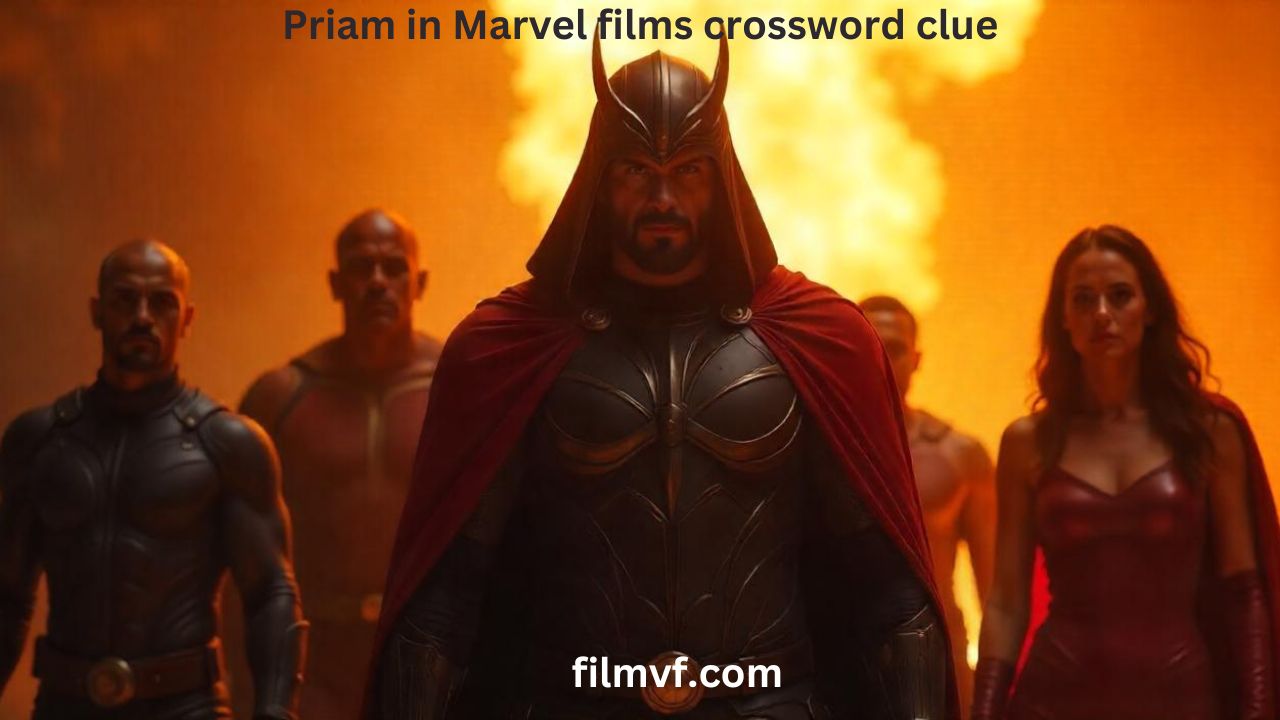
Decoding the Priam in Marvel Films Crossword Clue. Crossword puzzles continue to captivate enthusiasts, blending the thrill of wordplay with clever trivia from various realms. Recently, a specific clue has puzzled Marvel fans: Priam in Marvel films crossword clue. What makes this particular clue so intriguing? Let’s unravel its meaning, significance, and connection to the Marvel cinematic universe. This article dives deep into what the clue represents, its references, and how it fits into Marvel’s expansive lore.
Understanding the Background of Priam: Who Was He?
Priam appears prominently in Greek mythology. As the last king of Troy, he played a crucial role during the Trojan War. His wisdom, leadership, and tragic demise defined him as a character of noble bearing. However, in the context of the Marvel universe, one might wonder how Priam relates to superhero narratives. So, how does Marvel incorporate such a figure rooted in ancient history?
The Marvel Cinematic Universe’s Unique Approach to Mythology
Marvel has consistently drawn from rich mythological sources to create compelling characters and storylines. For instance, Thor’s character emerges from Norse mythology, while the Eternals touch upon various ancient mythos. The inclusion of a figure like Priam may indicate Marvel’s knack for integrating classic historical and mythological figures into their storytelling.
Why Priam’s Reference in Marvel Films Puzzles Fans
So, how does the Priam in Marvel films crossword clue tie into Marvel’s characters or stories? Many Marvel enthusiasts might scratch their heads at this clue, as Priam does not appear explicitly in Marvel movies. However, this crossword clue may refer to a character or concept metaphorically associated with Priam’s attributes—such as leadership, wisdom, or a tragic hero.
The Intriguing Connection Between Priam and Marvel Characters
Marvel often uses subtle references, hidden Easter eggs, or symbolic names to enrich their narratives. For instance, Thanos shares qualities with Priam, especially when it comes to leadership and tragic decisions. Like Priam, Thanos made heart-wrenching choices that led to massive consequences for his people. Yet, unlike Priam, Thanos embraced a more ruthless approach, which ultimately led to his downfall.
Exploring Priam’s Possible Representation in Marvel Films
When trying to decode the Priam in Marvel films crossword clue, fans should think beyond literal appearances. Perhaps Marvel introduces characters with attributes mirroring Priam’s resilience, nobility, and tragedy. In this sense, characters like Odin, the All-Father, or even Doctor Strange could metaphorically align with Priam’s persona due to their wisdom and sacrifices.
Crossword Puzzles and Their Popularity Among Marvel Fans
Crossword enthusiasts, especially those who enjoy Marvel-related trivia, appreciate clues that challenge their knowledge of the films. The Priam in Marvel films crossword clue presents an excellent example of how puzzles can combine intellectual curiosity with pop culture knowledge. Fans must think critically and draw connections between mythology and the cinematic universe.
Marvel’s Fascination with Greek Mythology in Their Stories
While Marvel predominantly focuses on Norse gods like Thor and Loki, their narratives occasionally tap into Greek mythology. The Eternals series, for example, has connections to Greek deities, reflecting Marvel’s creative flexibility. Thus, referencing a figure like Priam hints at Marvel’s broader thematic interest in ancient heroes and legends.
Clues Hidden in Plain Sight: Understanding Marvel’s Easter Eggs
Marvel’s films often hide Easter eggs—small details that reference other films, comics, or historical contexts. The Priam in Marvel films crossword clue may serve as one such hidden gem. If Marvel subtly referenced Priam, it could be through symbolic gestures or character arcs. For instance, an ancient king’s statue or a background dialogue may allude to Priam’s legacy.
Why Crossword Puzzles Feature Marvel Characters and Clues
Crosswords tap into the collective knowledge of players, making them popular among fans of various franchises. The integration of characters like Priam into puzzles captures the imagination, pushing fans to revisit Marvel’s expansive film catalog. These clues also help Marvel aficionados connect different storylines, bridging mythology with modern superhero tales.
The Popularity of Crossword Clues Rooted in Pop Culture
Pop culture crossword puzzles allow fans to test their trivia knowledge, often leading to moments of “aha!” when a clue finally clicks. The Priam in Marvel films crossword clue fits within this trend, challenging fans to think beyond obvious character references. This integration of deeper historical and mythical characters into puzzles showcases Marvel’s far-reaching influence on entertainment.
Analyzing Marvel’s Creative Storytelling Techniques
Marvel’s cinematic universe thrives on blending reality with fantasy. By incorporating ancient figures like Priam, Marvel bridges the gap between mythology and modern superhero tales. Priam symbolizes wisdom, leadership, and tragic heroism, traits embodied by various Marvel characters. This parallel enriches the storylines, adding layers of meaning to character development.
Could Priam Have a Future Role in Marvel Films?
Given Marvel’s expanding universe, it’s plausible they might introduce characters rooted in Greek mythology. Imagine a future film where Priam’s legend ties into an ancient war or a hidden faction within the Marvel universe. Such story arcs could bring fresh perspectives, blending historical intrigue with modern superhero dynamics.
How Fans Solve the Priam Crossword Clue with Contextual Knowledge
To crack the Priam in Marvel films crossword clue, fans should revisit Marvel’s films, focusing on historical references and mythological allusions. Marvel’s intricate storytelling often rewards viewers who pay attention to minor details. Solving such clues requires knowledge beyond the surface, diving deep into character motivations, dialogues, and background elements.
The Impact of Mythological Figures on Modern Storytelling
Decoding the Priam in Marvel Films Crossword Clue. Mythological characters like Priam continue to inspire modern narratives, especially in comics and superhero genres. Marvel’s incorporation of such figures emphasizes timeless themes of heroism, sacrifice, and leadership. By using the Priam in Marvel films crossword clue, creators pay homage to these enduring legends, reminding fans of their timeless relevance.
Final Thoughts on Deciphering the Priam in Marvel Films Crossword Clue
Ultimately, Decoding the Priam in Marvel Films Crossword Clue, the Priam in Marvel films crossword clue encapsulates Marvel’s intricate storytelling and love for weaving myth into modern narratives. Whether it refers to a literal character or metaphorical symbolism, this clue challenges fans to think deeply. By combining history, mythology, and superhero elements, Marvel enriches the viewer’s experience, making each film a treasure trove of hidden meanings.
FAQs
Why does Priam appear in a Marvel crossword clue?
The clue likely refers to characters or themes in Marvel films symbolically related to Priam’s traits, such as leadership.
Could Priam appear in Marvel’s future storylines?
It’s possible. Marvel often draws from mythology to introduce fresh characters and unique story arcs.
How do crosswords connect to the Marvel universe?
Crosswords challenge fans to recall and connect various elements from Marvel films, enhancing their appreciation of the narratives.
Which Marvel characters resemble Priam?
Characters like Odin or Doctor Strange reflect Priam’s wisdom and leadership, though they differ in their methods and outcomes.
How does Marvel blend mythology with superhero stories?
Marvel creatively adapts mythological figures to align with their superhero lore, enriching character arcs with ancient symbolism.
What makes crossword puzzles engaging for Marvel fans?
Puzzles test fans’ knowledge and allow them to explore deeper layers of the Marvel universe, bridging the gap between trivia and storytelling.
Film
Unpacking the Magic of a Hit Film Whose Narrator Humorously Remarks
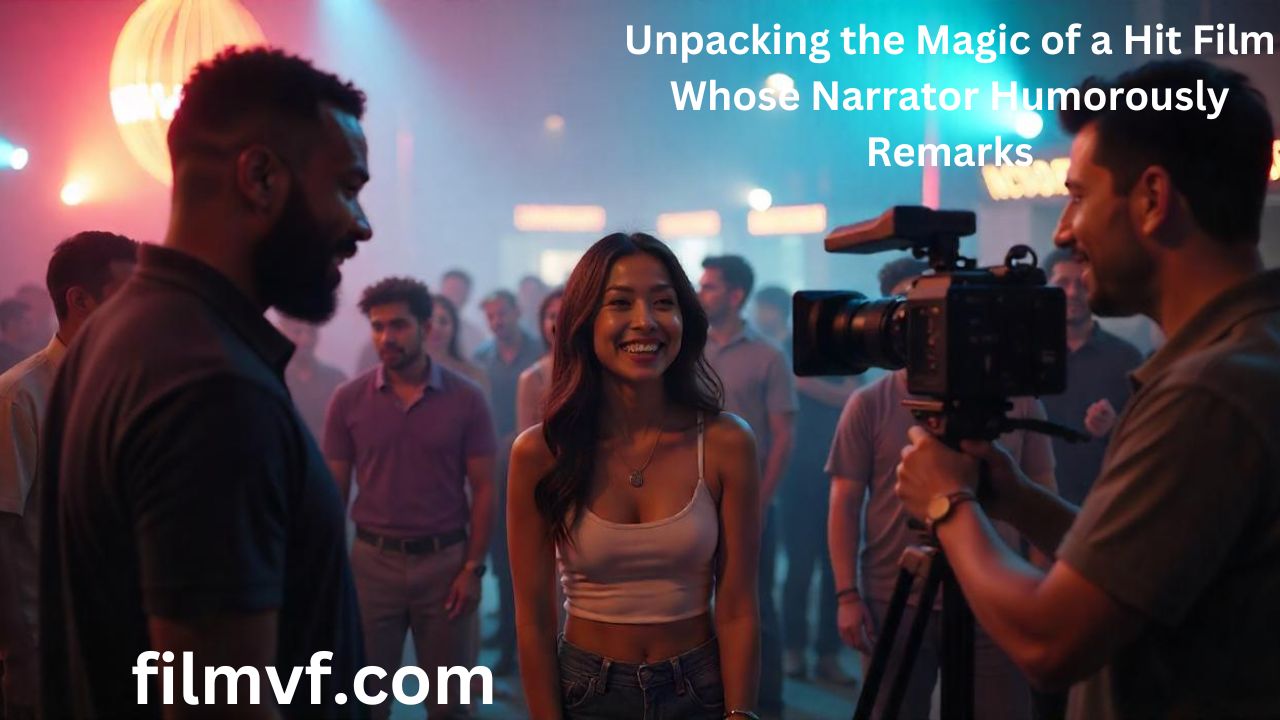
Unpacking the Magic of a Hit Film Whose Narrator Humorously Remarks. In the realm of cinema, certain movies stand out due to their engaging storytelling and unique narrative techniques. A hit film whose narrator humorously remarks can instantly capture the audience’s attention and elevate the movie’s overall experience. This narrative style offers an extra layer of humor, often breaking the fourth wall, drawing viewers deeper into the plot, and delivering a memorable cinematic experience.
The art of narration plays a crucial role in film, particularly when the narrator adds humorous commentary. This approach brings a fresh and unexpected perspective, allowing viewers to connect more deeply with the characters and story. Moreover, these witty remarks provide clever insights into the characters’ thoughts and emotions, creating a blend of comedy and relatability.
The Role of the Humorous Narrator in Film
A narrator serves as a guide, leading the audience through the story while providing insights and context. However, in a hit film whose narrator humorously remarks, the narrative becomes more than a simple recount of events. The comedic narration adds levity to intense scenes, ensures the story remains engaging, and, at times, even offers clever critiques of the unfolding plot.
When done right, this kind of humor feels seamless and enhances the storytelling. For instance, the narrator may poke fun at the protagonist’s decisions, or comment sarcastically on a plot twist. These witty asides can highlight the absurdities of the characters‘ actions and even reflect the thoughts of the audience. As a result, the narrative feels interactive, almost as if the film is in conversation with its viewers.
Iconic Films That Mastered the Humorous Narration Style
Many successful films have utilized this narrative style, turning otherwise ordinary plots into timeless classics. These movies succeed by blending humor, wit, and self-awareness into their narration, captivating audiences who appreciate clever dialogue and entertaining storytelling. Below are some examples of hit films whose narrator humorously remarks throughout:
- Fight Club (1999): The narrator, played by Edward Norton, offers a cynical and often humorous commentary on consumer culture, modern life, and his personal struggles. This dry, self-deprecating humor becomes a cornerstone of the film’s dark, yet comedic tone.
- Ferris Bueller’s Day Off (1986): Ferris, the main character, directly addresses the audience with witty quips and observations, adding a layer of charm to the story. The humorous narration turns the film into a light-hearted romp with a rebellious spirit.
- Deadpool (2016): Breaking the fourth wall becomes a key feature in this superhero film, where the protagonist’s narration is filled with sarcastic humor. This playful approach differentiates Deadpool from other superhero films, endearing it to fans who enjoy irreverent comedy.
Why Audiences Love a Witty Narrator
Audiences resonate with a hit film whose narrator humorously remarks because it feels more personal and relatable. The narration offers a window into the characters’ minds, revealing their insecurities, ambitions, and hidden thoughts. When the narrator adds humorous asides, it becomes easier for viewers to form an emotional connection with the characters.
Humorous narrators also serve to lighten the tone of a film, especially during tense or dramatic moments. This balance between humor and seriousness keeps viewers engaged and prevents the story from becoming too heavy-handed. Additionally, humor adds an element of surprise, making the audience laugh when they least expect it.
The Art of Breaking the Fourth Wall
Breaking the fourth wall refers to the technique where a character speaks directly to the audience, acknowledging their presence. In a hit film whose narrator humorously remarks, this approach often intertwines with the storytelling, making viewers feel like active participants in the plot.
One classic example is the film Annie Hall (1977), where Woody Allen’s character frequently turns to the camera, making witty remarks about the absurdity of love and relationships. By breaking the fourth wall, the film establishes an intimate and engaging atmosphere, drawing the audience into its world.
Similarly, in Goodfellas (1990), Ray Liotta’s character narrates with a mix of dark humor and brutal honesty, providing insights into the gangster lifestyle. His humorous narration offers an unfiltered look into the criminal underworld, making the film both entertaining and thought-provoking.
How to Use a Humorous Narrator Effectively
While humorous narration can elevate a film, it requires a delicate balance to ensure it doesn’t become overbearing. The humor should feel organic and complement the film’s tone rather than distract from it. Additionally, timing plays a significant role; the narrator’s quips should align with the pacing of the story to avoid disrupting the flow.
A good humorous narrator will know when to interject with a witty remark and when to let the scene speak for itself. In a well-executed film, the narrator becomes another character, one who comments on the story without overshadowing the plot. The challenge lies in ensuring that the humor enhances rather than detracts from the viewing experience.
Humorous Narration and Its Impact on Film Success
A hit film whose narrator humorously remarks often enjoys higher audience engagement due to its unique storytelling approach. This technique provides more than just comic relief; it adds depth, allowing the film to explore complex themes with a light-hearted touch. As a result, these films stand out in a crowded cinematic landscape, appealing to both casual viewers and film enthusiasts who appreciate clever writing.
Movies like Kiss Kiss Bang Bang (2005) utilize humorous narration to both entertain and subvert genre expectations. The film’s self-aware narrative style plays with the conventions of the detective genre, turning familiar tropes into sources of humor. By doing so, it creates a fresh and entertaining experience, even for seasoned film lovers.
What Filmmakers Can Learn from These Narration Techniques
Directors and screenwriters aiming to create a hit film whose narrator humorously remarks should study the films that mastered this technique. The key lies in balancing humor with meaningful storytelling. Narrators should not simply exist to crack jokes but rather to add value to the story by providing unique perspectives.
Filmmakers should also consider their target audience when using this technique. A humorous narrator might resonate more with viewers who appreciate dry wit, sarcasm, or self-aware humor. The tone should align with the film’s overall style to ensure consistency.
Conclusion
Ultimately, the success of a hit film whose narrator humorously remarks comes down to the skillful blending of humor, storytelling, and character development. These films capture the audience’s imagination by adding layers of wit and commentary that resonate long after the credits roll. The witty narration not only keeps viewers entertained but also deepens their connection to the story and its characters.
By embracing a humorous narrator, filmmakers can create films that feel fresh, engaging, and timeless. This narrative style invites audiences to not only watch a story unfold but also laugh along with the characters. So, the next time you watch a film with a witty narrator, pay attention to how their remarks shape your experience—it just might be the secret sauce behind the movie’s enduring appeal.
Frequently Asked Questions
What are some films known for their humorous narration?
- Some examples include Fight Club, Deadpool, Annie Hall, and Ferris Bueller’s Day Off.
How does humorous narration impact a film’s storytelling?
- It adds an extra layer of engagement, making the film more relatable and entertaining for viewers.
Why do audiences enjoy films with humorous narrators?
- These films feel more personal, as if the narrator is directly speaking to them, adding depth to the story.
Is breaking the fourth wall the same as humorous narration?
- While related, breaking the fourth wall specifically involves characters addressing the audience, often with humorous intent.
Can a humorous narrator work in serious films?
- Yes, as seen in Goodfellas, where dark humor is used to explore serious themes without diminishing their impact.
What makes humorous narration challenging for filmmakers?
- Striking the right balance between humor and narrative flow is crucial, ensuring the jokes do not overshadow the story.
-

 Film Streaming9 months ago
Film Streaming9 months agoStreaming Film VF: Your Gateway to French Cinema
-
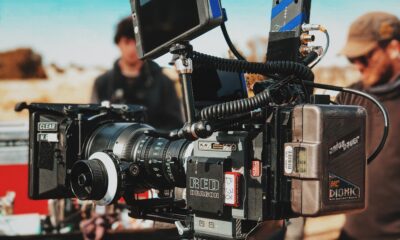
 Film11 months ago
Film11 months agoUnveiling the Magic: Exploring the Art of Film Techniques
-

 Film9 months ago
Film9 months agodG9ERgG-deadpool-2
-
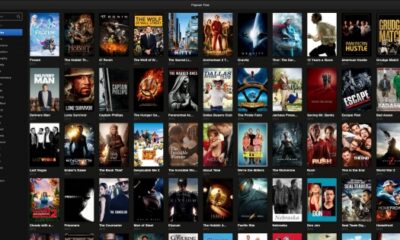
 Film Streaming10 months ago
Film Streaming10 months agoFilm Streaming vs Cinema Experience: Which Offers a Better Movie Viewing Experience?
-

 Film Streaming9 months ago
Film Streaming9 months agosuicide squad streaming
-
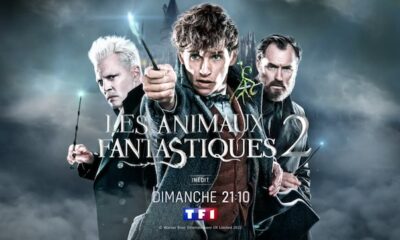
 Film Streaming9 months ago
Film Streaming9 months agoles animaux fantastiques 2 streaming
-
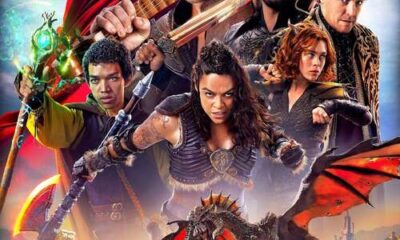
 Film Streaming9 months ago
Film Streaming9 months agoFilm VF Streaming: Your Gateway to French Cinema
-
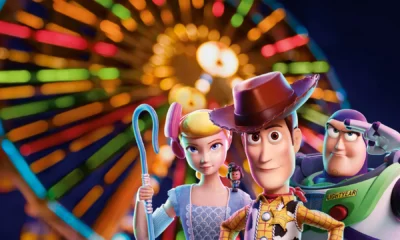
 Film Streaming9 months ago
Film Streaming9 months agoToy Story 4 streaming
